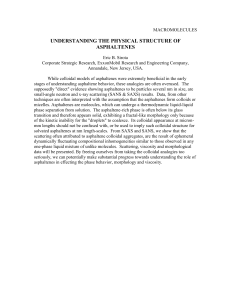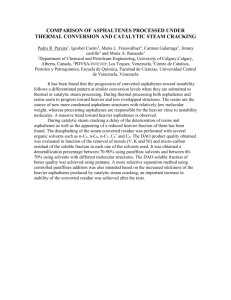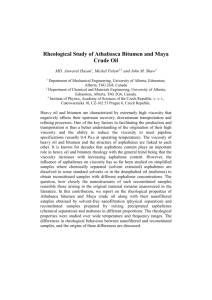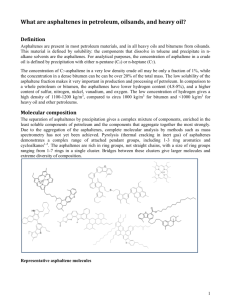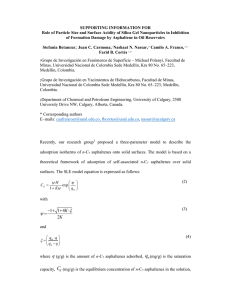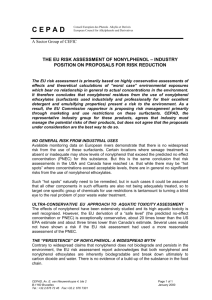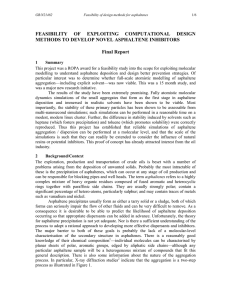Andersen4 - University of Alberta
advertisement
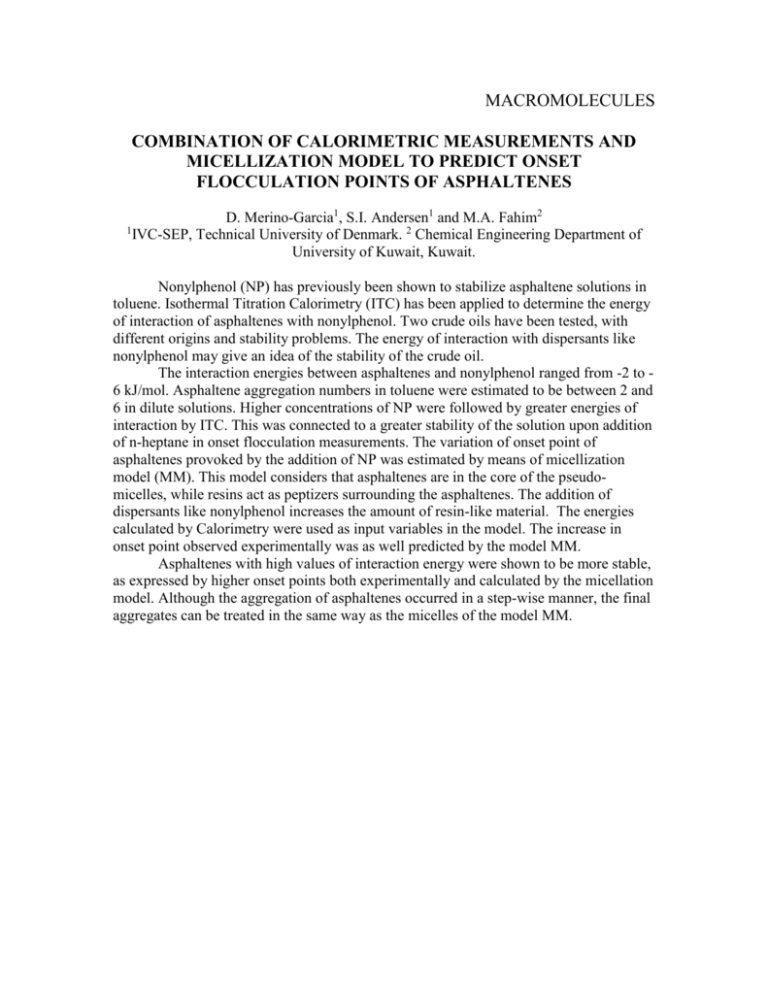
MACROMOLECULES COMBINATION OF CALORIMETRIC MEASUREMENTS AND MICELLIZATION MODEL TO PREDICT ONSET FLOCCULATION POINTS OF ASPHALTENES 1 D. Merino-Garcia1, S.I. Andersen1 and M.A. Fahim2 IVC-SEP, Technical University of Denmark. 2 Chemical Engineering Department of University of Kuwait, Kuwait. Nonylphenol (NP) has previously been shown to stabilize asphaltene solutions in toluene. Isothermal Titration Calorimetry (ITC) has been applied to determine the energy of interaction of asphaltenes with nonylphenol. Two crude oils have been tested, with different origins and stability problems. The energy of interaction with dispersants like nonylphenol may give an idea of the stability of the crude oil. The interaction energies between asphaltenes and nonylphenol ranged from -2 to 6 kJ/mol. Asphaltene aggregation numbers in toluene were estimated to be between 2 and 6 in dilute solutions. Higher concentrations of NP were followed by greater energies of interaction by ITC. This was connected to a greater stability of the solution upon addition of n-heptane in onset flocculation measurements. The variation of onset point of asphaltenes provoked by the addition of NP was estimated by means of micellization model (MM). This model considers that asphaltenes are in the core of the pseudomicelles, while resins act as peptizers surrounding the asphaltenes. The addition of dispersants like nonylphenol increases the amount of resin-like material. The energies calculated by Calorimetry were used as input variables in the model. The increase in onset point observed experimentally was as well predicted by the model MM. Asphaltenes with high values of interaction energy were shown to be more stable, as expressed by higher onset points both experimentally and calculated by the micellation model. Although the aggregation of asphaltenes occurred in a step-wise manner, the final aggregates can be treated in the same way as the micelles of the model MM.
